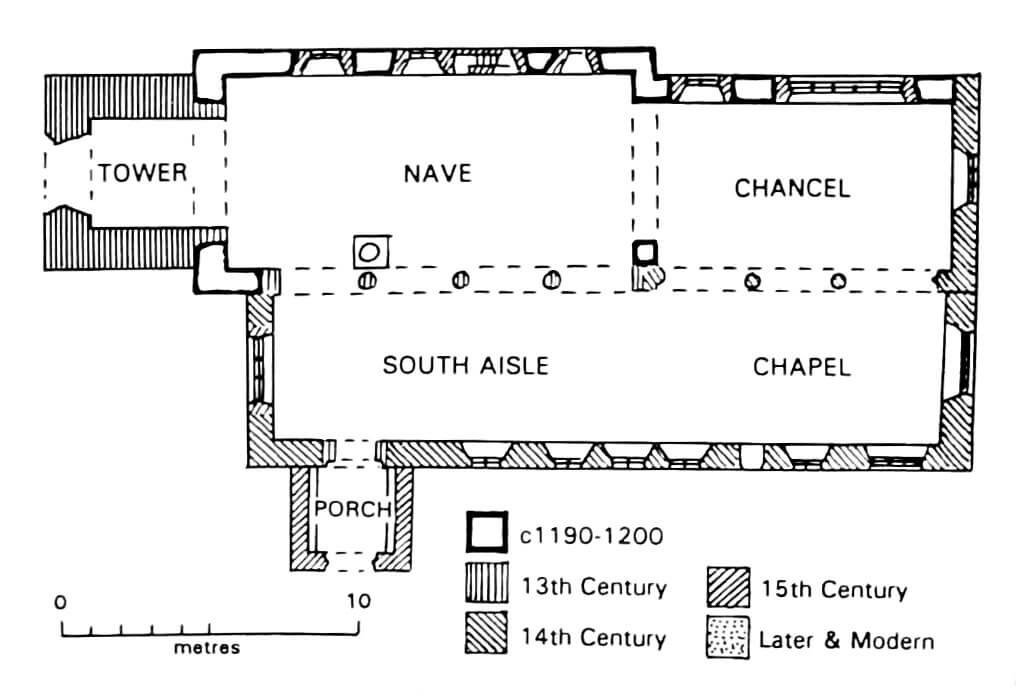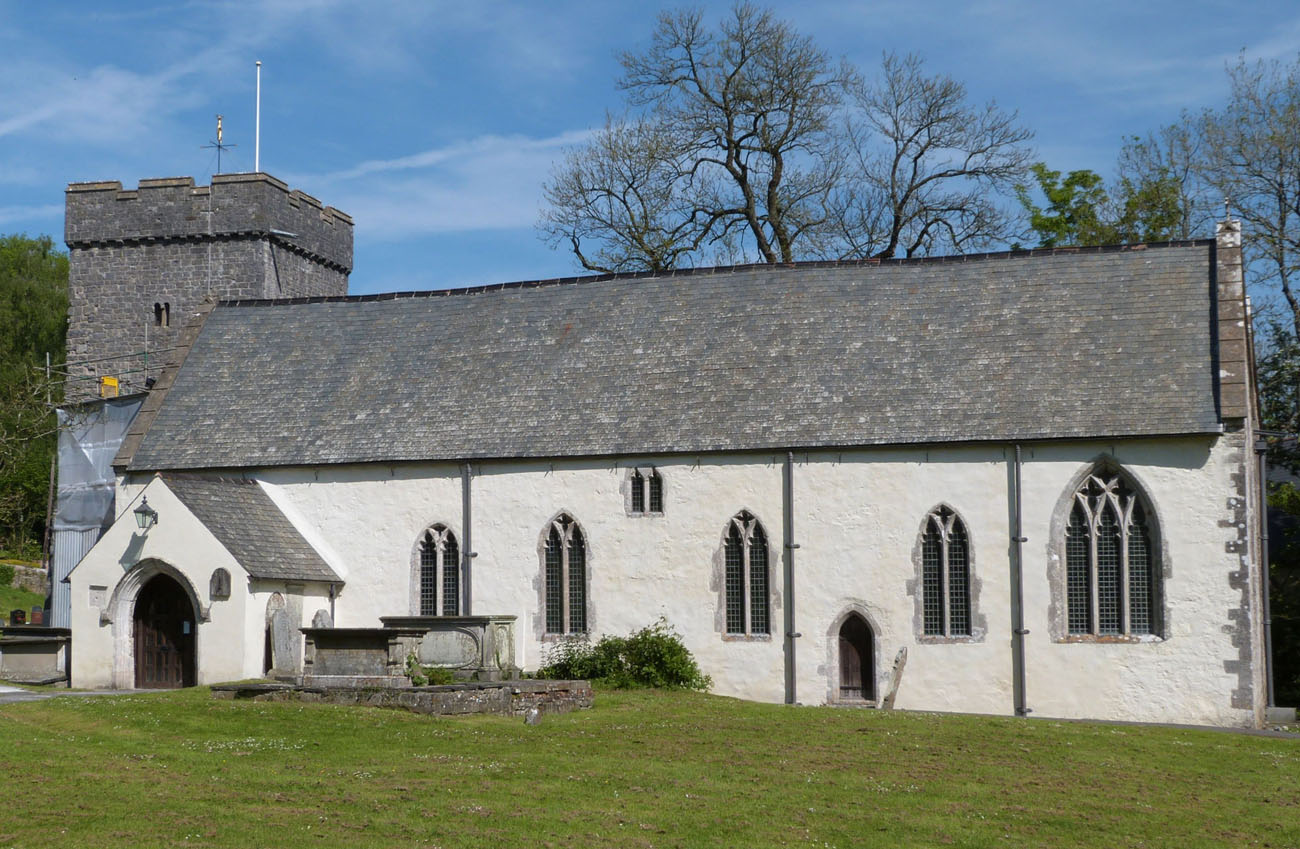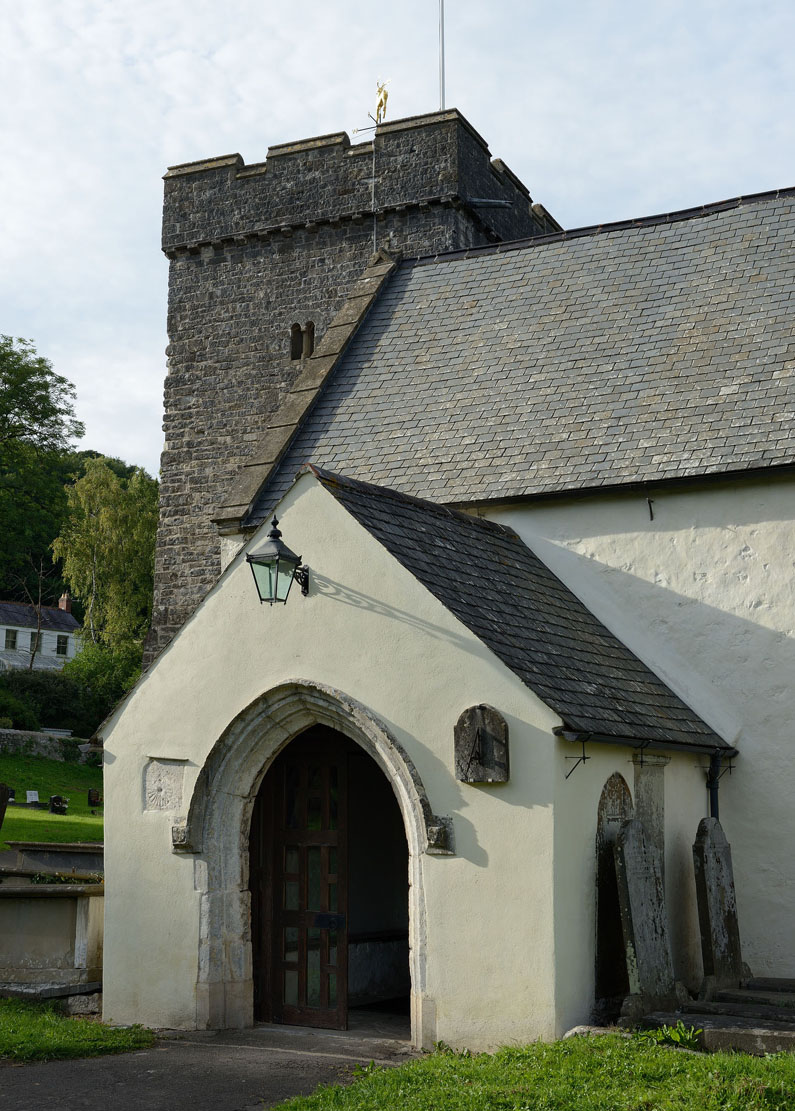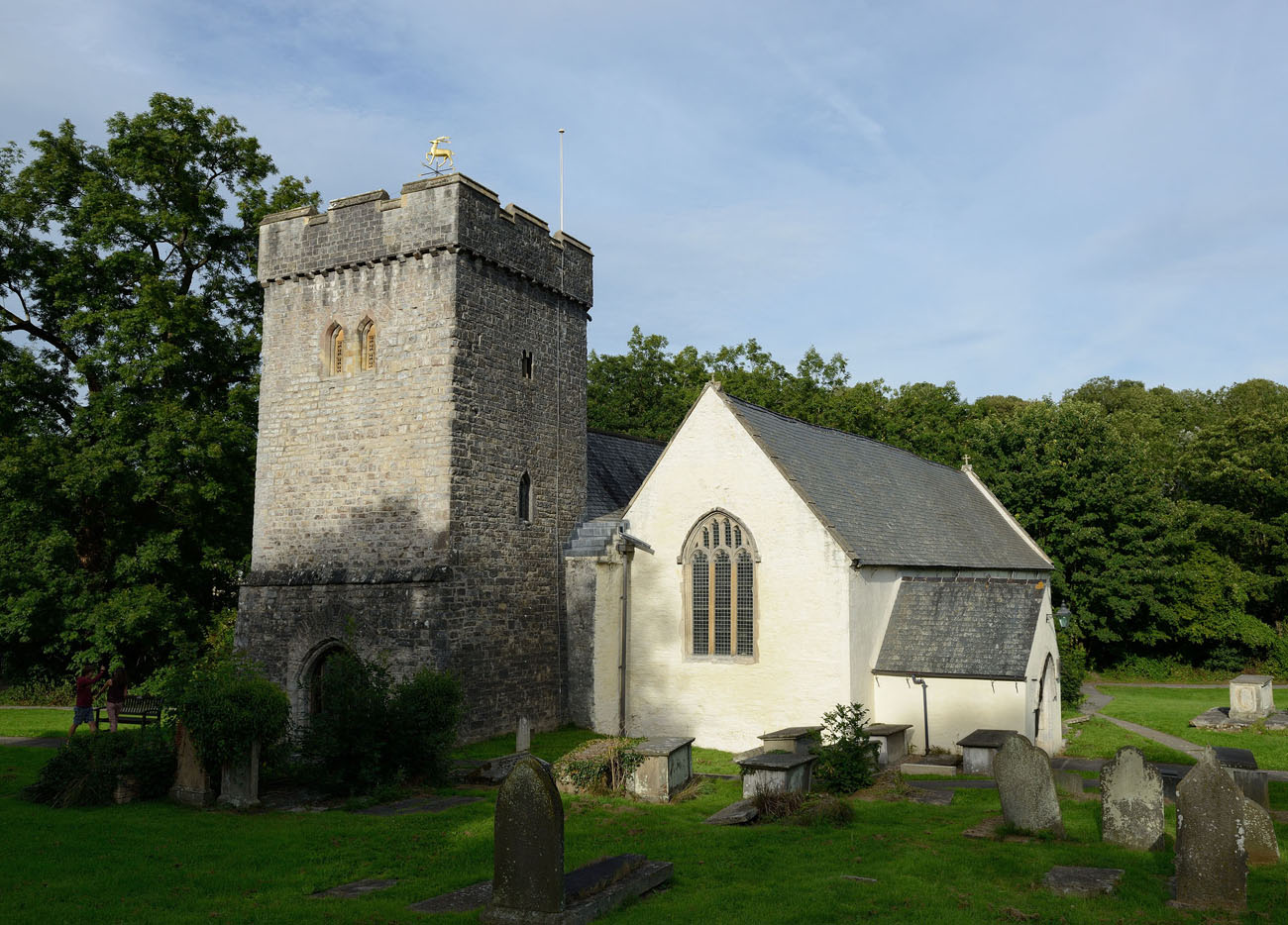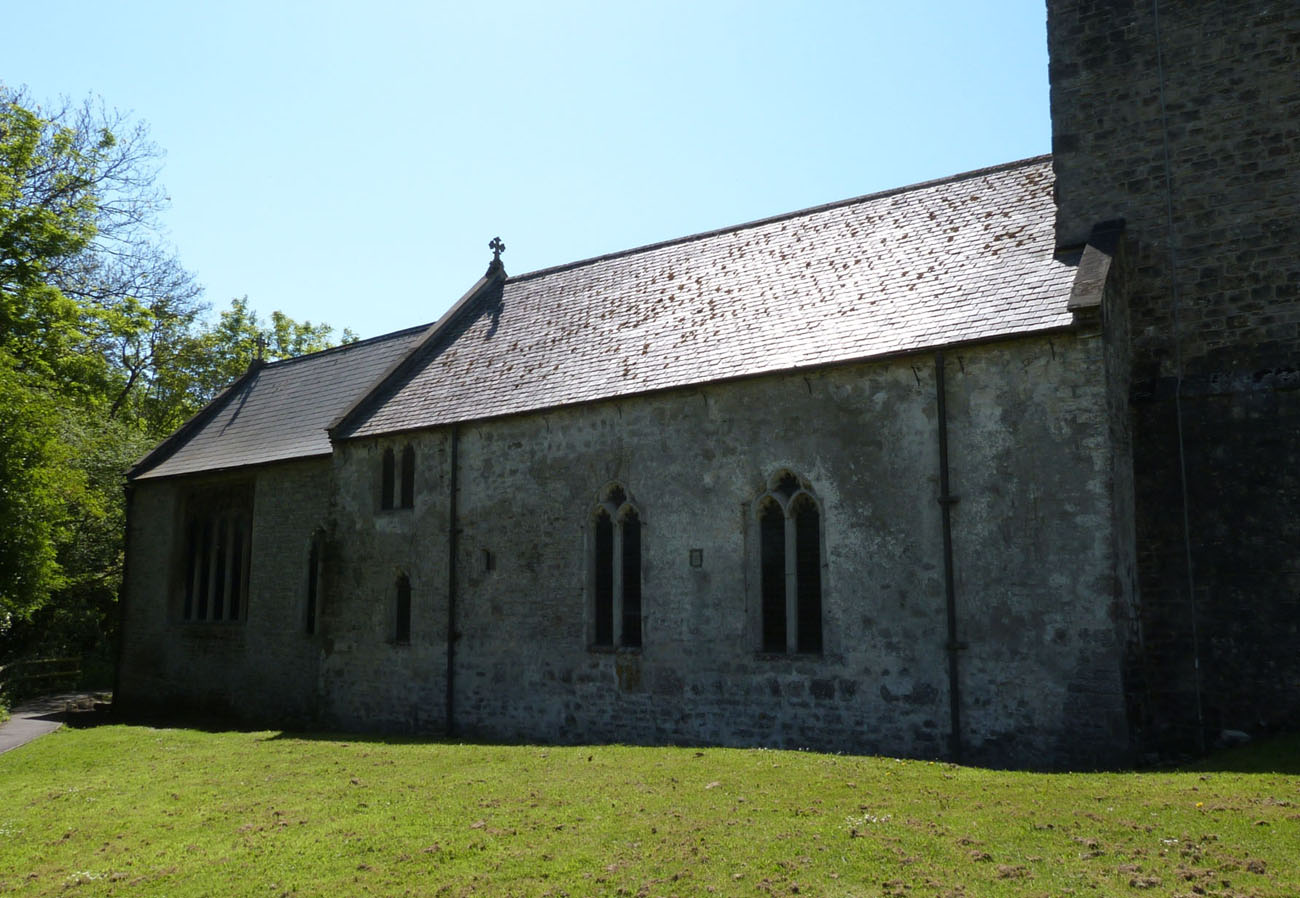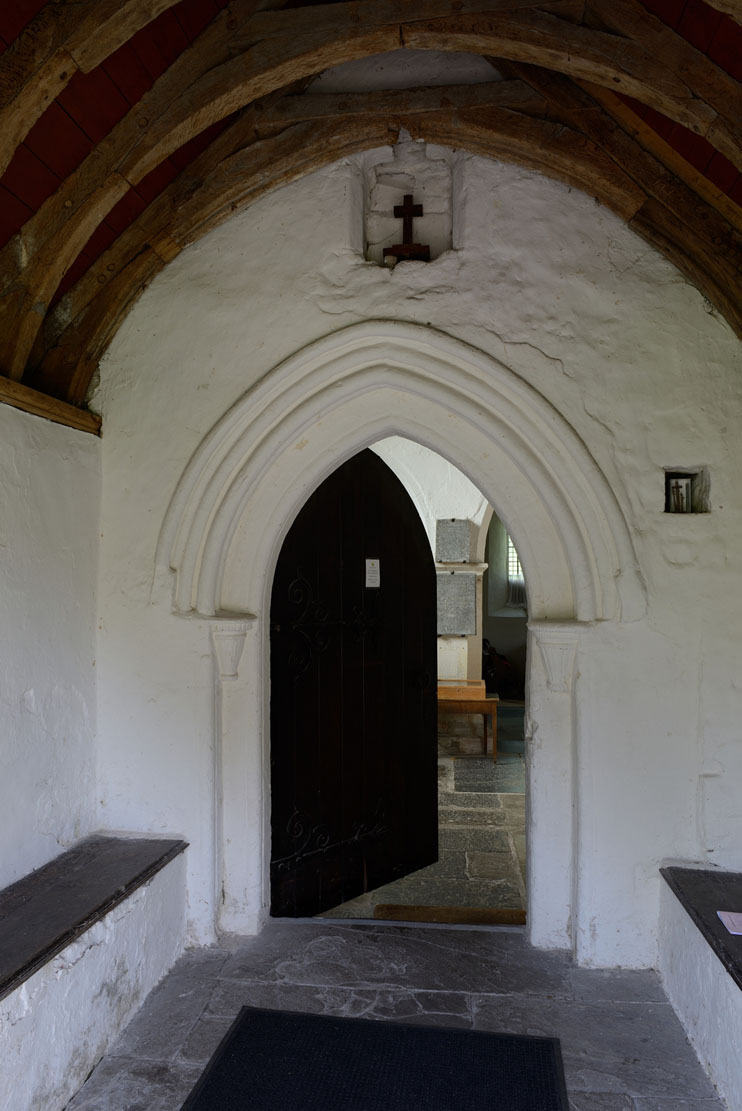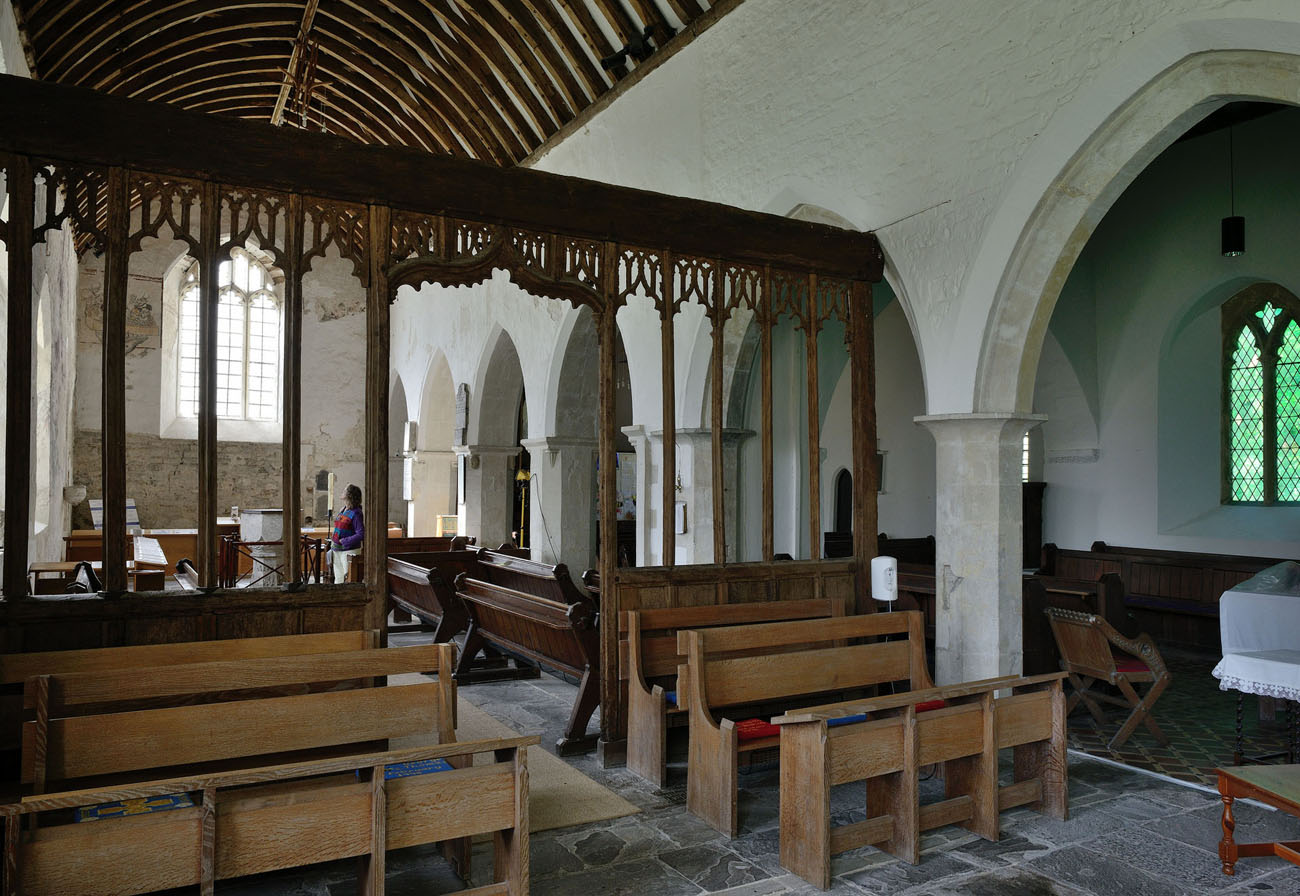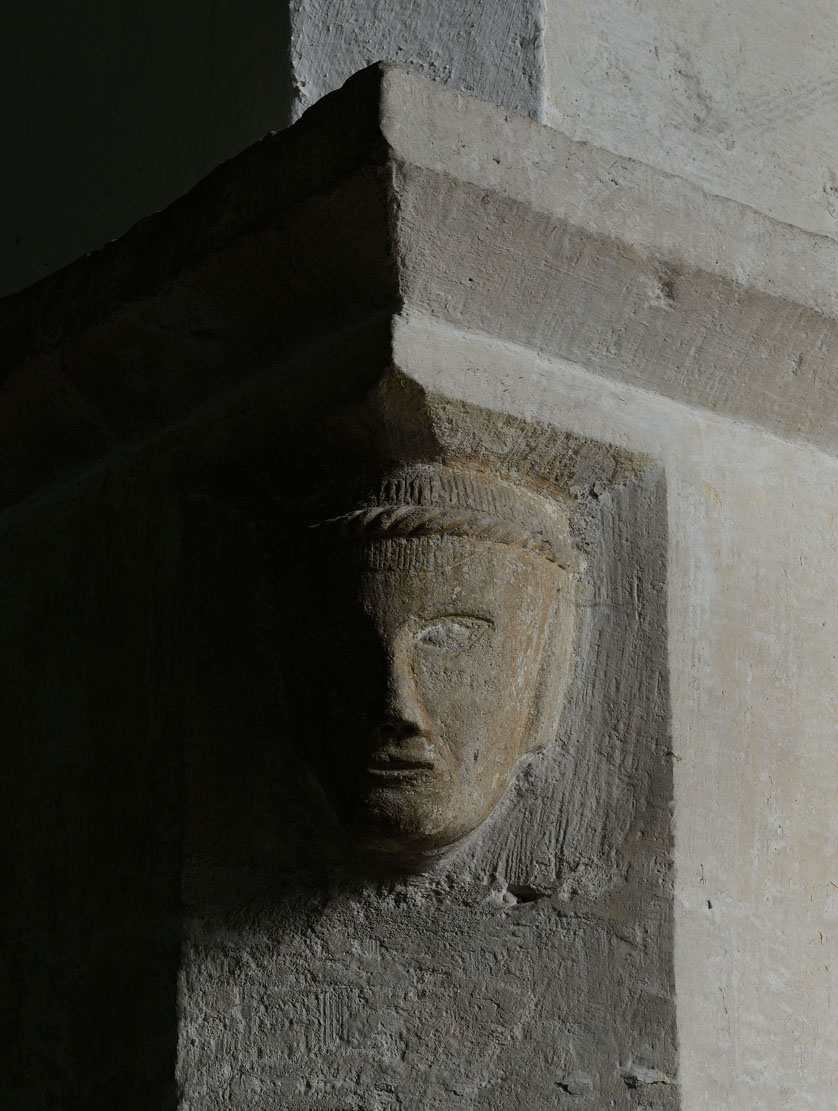History
The church of St. Cadoc in Llancarfan was built in the late 12th or early 13th century. It was one of the few in Wales dedicated to St. Cadoc, but it is believed that it was in Llancarfan that the saint served as abbot. In the years 1284-1307, the church was rebuilt, probably then the tower was erected. Further work was conducted in the later period of the 14th century, when the southern aisle was built. In the fifteenth century, the church was decorated inside with wall frescoes and enlarged with a porch, and its windows were transformed into late Gothic (Perpendicular). Apparently, it also had a magnificent stained glass window in the presbytery, but in the seventeenth century a resident of the village named Whitton Bush destroyed it, repeatedly hitting and shouting: “Down with the Babylonian whore!”. In the years 1887-1888 the church was renovated and the west tower was rebuilt.
Architecture
The church at the end of the Middle Ages consisted of a rectangular nave, a shorter and narrower rectangular chancel on the eastern side and a southern aisle with a length almost equal to the total nave and chancel. On the west side there was a tower from the turn of the 13th and 14th centuries, crowned with a parapet mounted on protruding corbels and a battlement. On the south side, a porch was erected in front of the entrance portal.
Inside, both aisle, nave and the chancel were topped with wooden barrel ceilings from the 15th century. The western part of the southern aisle, i.e. the later Raglan Chapel, was separated from the eastern part by a 15th-century rood screen. Originally, the rood screen also separated the main nave from the presbytery, with stairs embedded in the northern wall, which led to the balcony of the partition. The southern aisle was opened on the nave with four pointed arcades based on polygonal pillars, and on the presbytery with three arcades. A single pointed arcade set on corbels opened a porch under the nave.
The walls of the St Cadoc’s church were decorated with late-medieval frescoes depicting the seven sins, the death of Gallant and the Saint George fighting the Dragon. From the 15th century, they were illuminated by large pointed, two-light windows with Y-shaped tracery, larger three-light windows and the largest, magnificent five-light window, set atypically in the northern wall of the presbytery.
Current state
The church in Llancarfan is today one of the most valuable parish buildings in the Glamorgan region, listed with the highest class on a three-point scale defining Welsh monuments. This is due to the lack of major early modern transformations, the original late-medieval layout and many original architectural details (window traceries, portals, carved masks). A valuable monuments are also wall frescoes, considered to be one of the best preserved in the whole of Great Britain. Among them, the image of Saint George and the dragon is the most complete painting on this subject in Wales.
bibliography:
Salter M., The old parish churches of Gwent, Glamorgan & Gower, Malvern 2002.
Wooding J., Yates N., A Guide to the churches and chapels of Wales, Cardiff 2011.
Website britishlistedbuildings.co.uk, St Cadoc’s Parish Church. A Grade I Listed Building in Llancarfan, Vale of Glamorgan.

